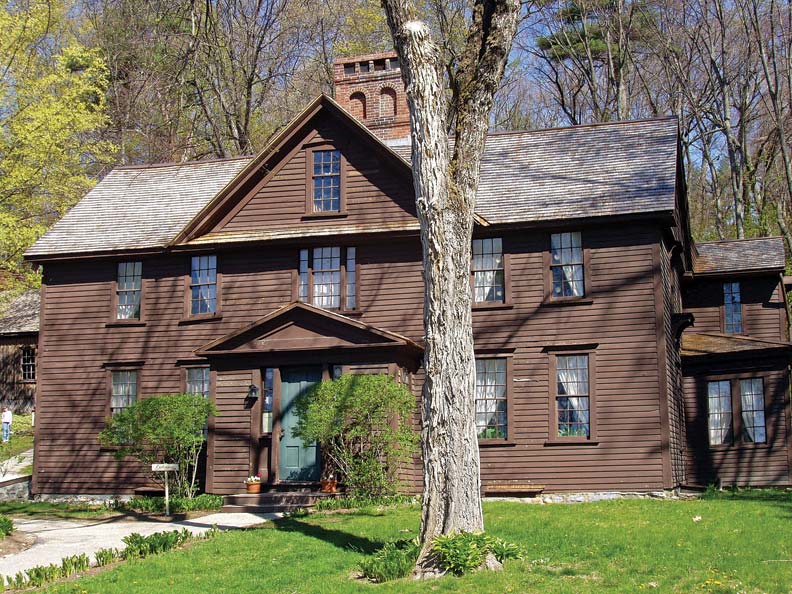
Orchard House is where Louisa May Alcott wrote Little Women, and today is a museum devoted to the Alcott family. (Photo: Courtesy of Wikipedia)
After he discovered Transcendentalism, my high-school-aged son and I went to Concord as literary tourists—even at the height of summer, it turned out to be a lovely, quiet trip. On the second day we arose at 5 a.m. to head to Walden Pond, to see it as Thoreau did, empty and pristine. Turns out every baby boomer in the county does a constitutional swim at about that time. Plastic caps bobbed in the water as we walked the wooded trail around the lake. So Concord is a real town, not a hyper-reality theme park. But it’s a town that takes its history seriously.
Patriots & Poets
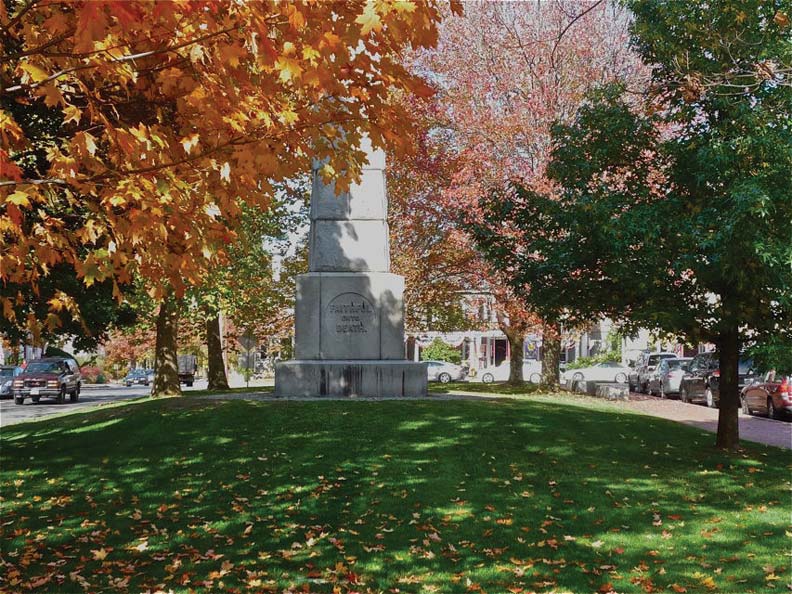
Concord’s byways radiate from Monument Square. (Photo: Courtesy of VisitingNewEngland.com)
Only 20 miles from Boston, this pretty, preservation-minded town at the confluence of the Sudbury and Assabet rivers is famous for its Revolutionary history; the Battle of Lexington and Concord was, of course, the initial conflict in the War of Independence.
The town is even better known for its literary past. Its most prominent citizen in the 19th century was Ralph Waldo Emerson, whose advocacy, in part, drew novelist Nathaniel Hawthorne and philosopher/educator Bronson Alcott (father of Louisa May Alcott, who wrote Little Women here). Henry David Thoreau, a native Concordian, was also part of Emerson’s circle. The town was the cradle of the Transcendentalist movement, as well as a stop on the Underground Railroad and a hotbed of early feminism and environmentalism. All of this history remains evident to a visitor today.
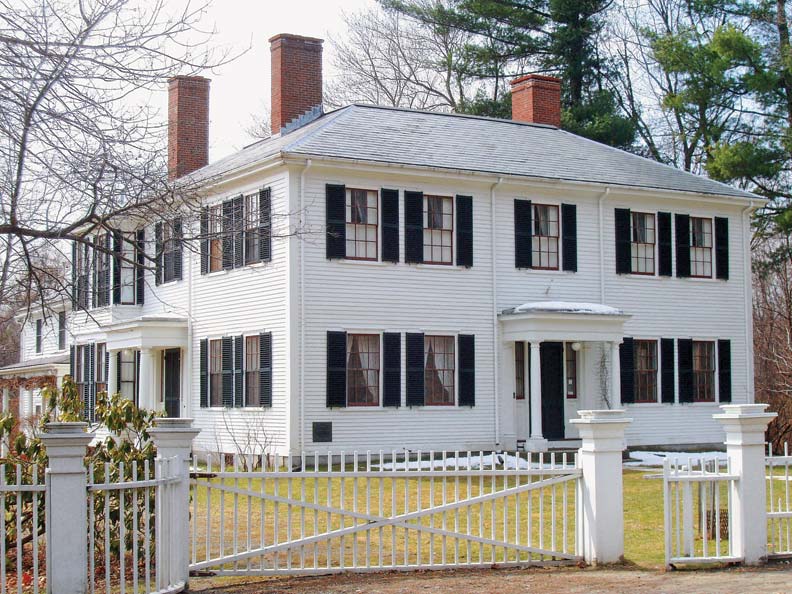
The 1828 Federal Emerson House is still owned by descendants of the author. (Photo: Courtesy of Wikipedia)
The Old Houses
Old Manse
Patriot minister William Emerson built this Georgian house in 1770. His descendant Ralph Waldo Emerson, as well as Nathaniel Hawthorne, lived and wrote here during the mid-19th century. Thoreau’s heirloom vegetable garden, planted in honor of Hawthorne’s wedding, was recently re-created.
Orchard House
This old house where Little Women was written long predates the Alcotts’ ownership and renovations, begun in 1857. The house is remarkably unchanged since the 1860s, including 80 percent of the furnishings. The tour explores the house, the rigorous daily life of the unusual Alcott family, and literary history.
Emerson House
This steadfast New England Federal was built in 1828 and purchased by Ralph Waldo Emerson in 1835; it became the center of Concord’s literary and social life. The interior is as it was in 1873, when it was renovated after a fire. Still owned by the Emerson family, the museum house is open to the public April–October.
Sites to See
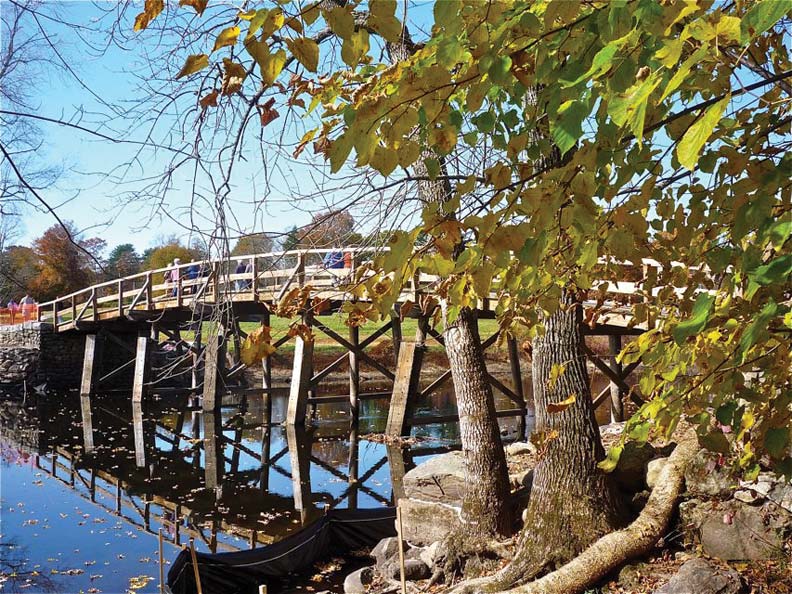
Old North Bridge (now a replica), site of “the shot heard ‘round the world.” (Photo: Courtesy of VisitingNewEngland.com)
Old North Bridge is where “the shot heard ‘round the world” was fired in 1775, triggering the Revolutionary War. This pedestrian bridge is a replica of the wood original and in its original location.
The Wayside (ca. 1700; closed for restoration until 2015) was once home to the Alcotts, Hawthorne, and author Harriett Lothrop (aka Margaret Sidney), who later lived at Grapevine Cottage nearby. Like the North Bridge, the house now is part of Minute Man National Historical Park.
Walden Pond is a glacial kettle hole amidst hiking trails and protected land, most famous for being where Henry David Thoreau lived in nature for two years and wrote Walden. See a replica of his tiny cabin here.
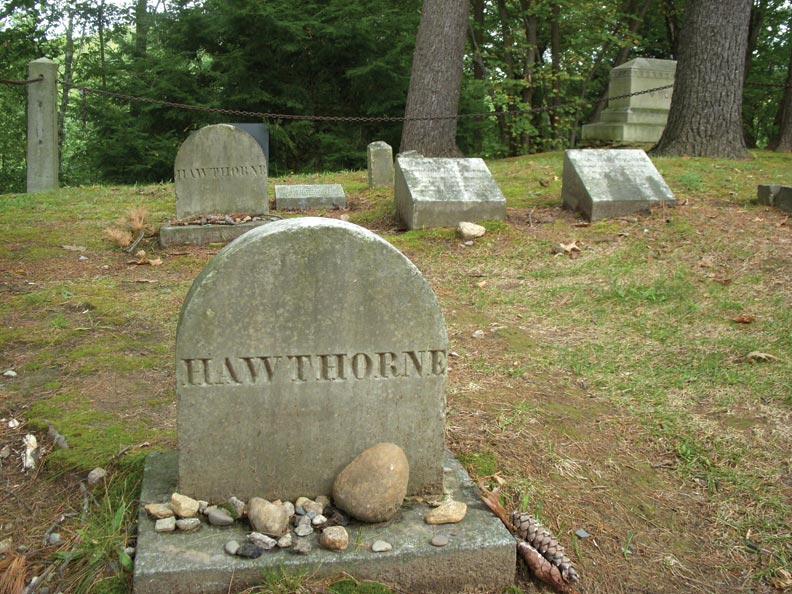
Sleepy Hollow Cemetery is a who’s who of famous authors. (Photo: Courtesy of OddThingsIveSeen.com)
Sleepy Hollow Cemetery is a sylvan, history-laden escape just one block from Monument Square. “Mourning Victory” is a Civil War memorial by sculptor Daniel Chester French. The graves of Thoreau, Hawthorne, Emerson, the Alcotts, and Harriett Lothrop are in the section known as Author’s Ridge.
Where To Stay
Monument Square is where you’ll find Concord’s Colonial Inn, a National Register landmark going back to 1716 and operated as a hotel since 1889. More intimate is the Hawthorne Inn Bed & Breakfast, which offers seven guestrooms and breakfast at a common table. Near the Square, North Bridge Inn (1885) was renovated in the late 20th century to provide six efficiency suites. Mill Brook Inn has two guestrooms in an 18th-century house with beehive ovens and a stenciled wood floor (and evening sherry).







